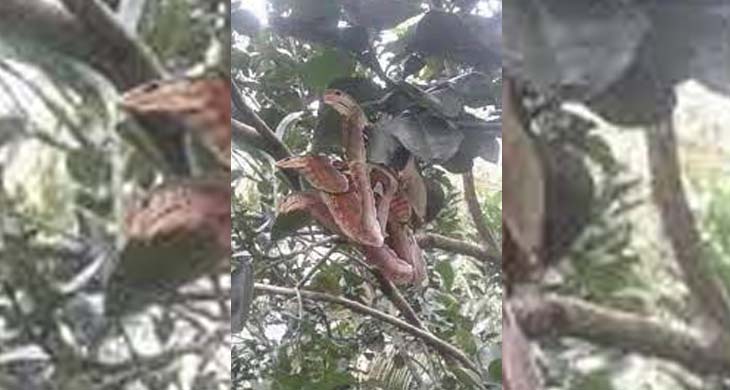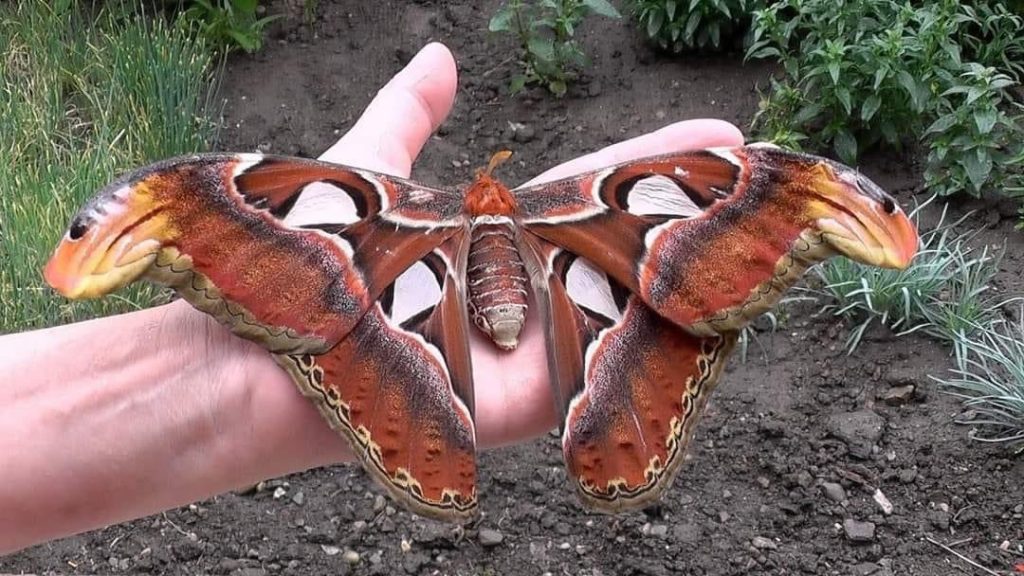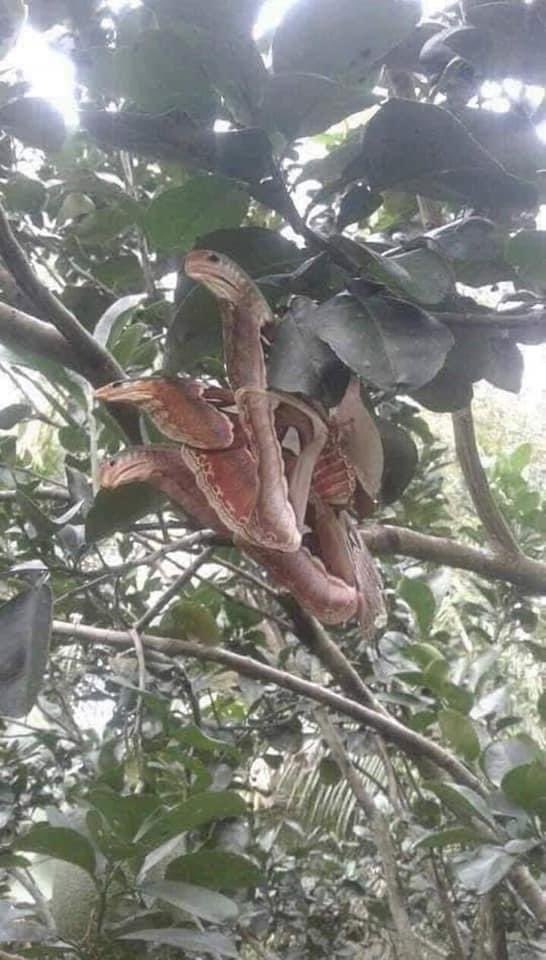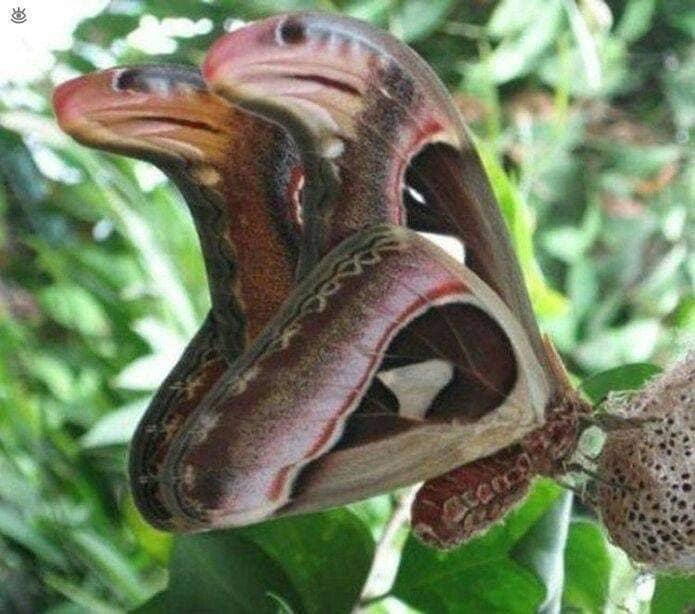When I First Saw This, I Was Sure It Was A Snake And I Was Startled To The Core! But When I Took A Closer Look

The Atlas moth (Attacus atlas) is not your average moth. With a wingspan of up to 9.4 inches, it holds the title of one of the world’s largest moth species.1 However, its impressive size is not the only thing that sets it apart. This moth possesses a unique wing pattern that cleverly mimics the appearance of a snake, or sometimes even multiple snakes.
An Astonishing Wing Pattern
The Atlas moth’s wing pattern is a stunning example of mimicry in the insect kingdom. Its wings feature intricate markings and patterns that closely resemble the slithering form of a snake. The pattern is so convincing that it can give the impression of a snake lurking in the branches of a tree, effectively deterring potential predators and ensuring the moth’s survival.

Disguising as a Snake
One of the most striking features of the Atlas moth’s wing pattern is its ability to mimic a snake’s head. The upper part of each forewing showcases a large, eye-like spot, often referred to as the “snake’s head.” This eye-catching detail serves as a deceptive defense mechanism. When threatened, the moth will fold its forewings to expose these spots, making a snake’s face appear. This startling visual display can startle predators and create momentary confusion, buying the moth precious time to escape.2
In addition to the snake’s head pattern, the Atlas moth’s wings also possess intricate markings that imitate the coiled body of a snake. These patterns often include wavy lines, scales, and vibrant colours, all meticulously arranged to create the illusion of a coiled snake resting on a tree branch. This ingenious adaptation helps the moth blend seamlessly into its environment, making it challenging for predators to detect and attack. However, if the moth is ever threatened, it may move to the ground and thrash around like a snake uncoiling, further deterring predators to want to get involved.3

Survival Strategies and Adaptations
Startling Potential Predators
This moth’s wing pattern is designed to startle potential threats. By resembling a snake, a creature widely feared and respected in the animal kingdom, the moth can exploit this instinctive fear and deter predators from approaching. The sudden revelation of the snake’s head spots, coupled with the overall snake-like appearance, creates a momentary illusion of danger, causing predators to think twice before launching an attack. This moment gives the moth an opportunity to escape or stand their ground.
Evolutionary Advantage
The development of this moth’s unique wing pattern is believed to have evolved as a result of natural selection. Over time, moths with wing patterns that resembled snakes may have had a higher chance of surviving and passing on their genes to the next generation. This advantageous adaptation allowed them to avoid predation and thrive in their natural habitats. The appearance is so believable that many people have been fooled by it as well!

Conservation and Appreciation
The Atlas moth’s remarkable wing pattern not only serves as a survival mechanism but also provides a window into the intricate beauty of the natural world. Understanding and appreciating the complexity of this adaptation can help foster a greater sense of conservation for these incredible creatures. By protecting their habitats and promoting biodiversity, we ensure the preservation of species like the Atlas moth and the continuation of their remarkable adaptations.
Moreover, studying the Atlas moth’s wing pattern not only deepens our understanding of natural phenomena but also sparks awe and wonder about the complexities of the natural world. It serves as a reminder that even in the seemingly ordinary aspects of life, there is often extraordinary beauty and hidden significance.
Conservation efforts are essential to ensure the survival of this moth and its unique adaptations. Preserving its natural habitat, which primarily includes the forests and woodlands of Asia, is crucial. Deforestation and habitat loss pose significant threats to the moth’s existence. By promoting sustainable land management practices and raising awareness about the importance of biodiversity conservation, we can contribute to the protection of these magnificent creatures.
In conclusion, the Atlas moth’s wing pattern is a captivating example of mimicry and adaptation in the natural world. Through its remarkable resemblance to a snake, the moth effectively deters predators, camouflages itself, and secures its survival. This extraordinary adaptation is a testament to the ingenuity and resilience of nature. By appreciating and conserving these unique creatures, we not only contribute to the preservation of biodiversity but also deepen our understanding of the intricate beauty that exists in the animal kingdom. This moth and its snake-like wings serve as a constant reminder of the wonders that await us when we explore and appreciate the diversity of life on our planet.




